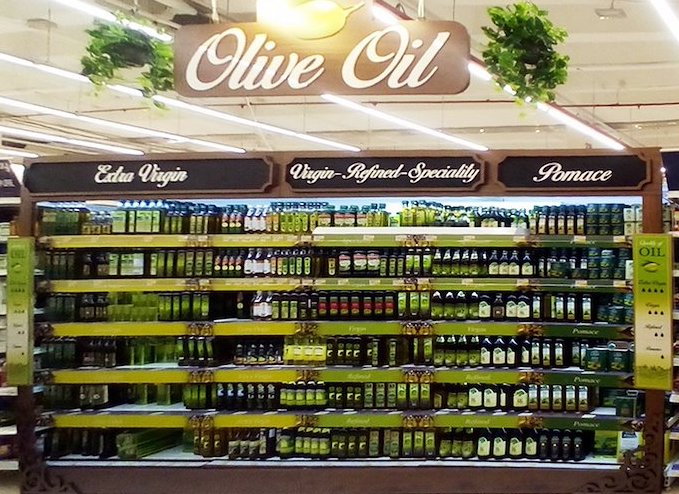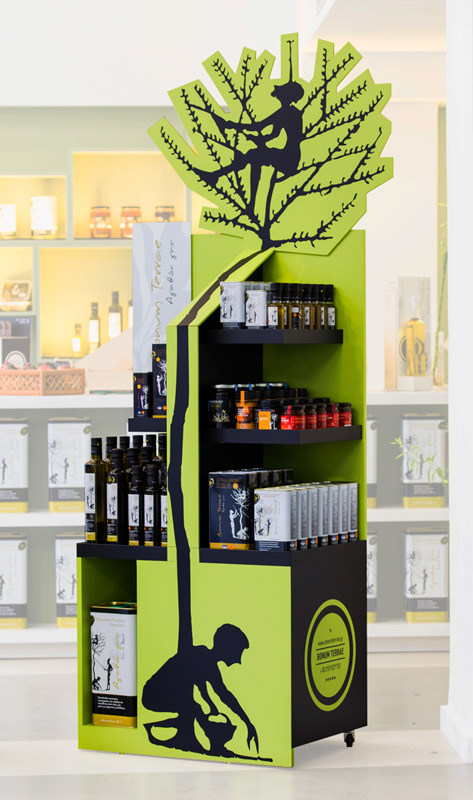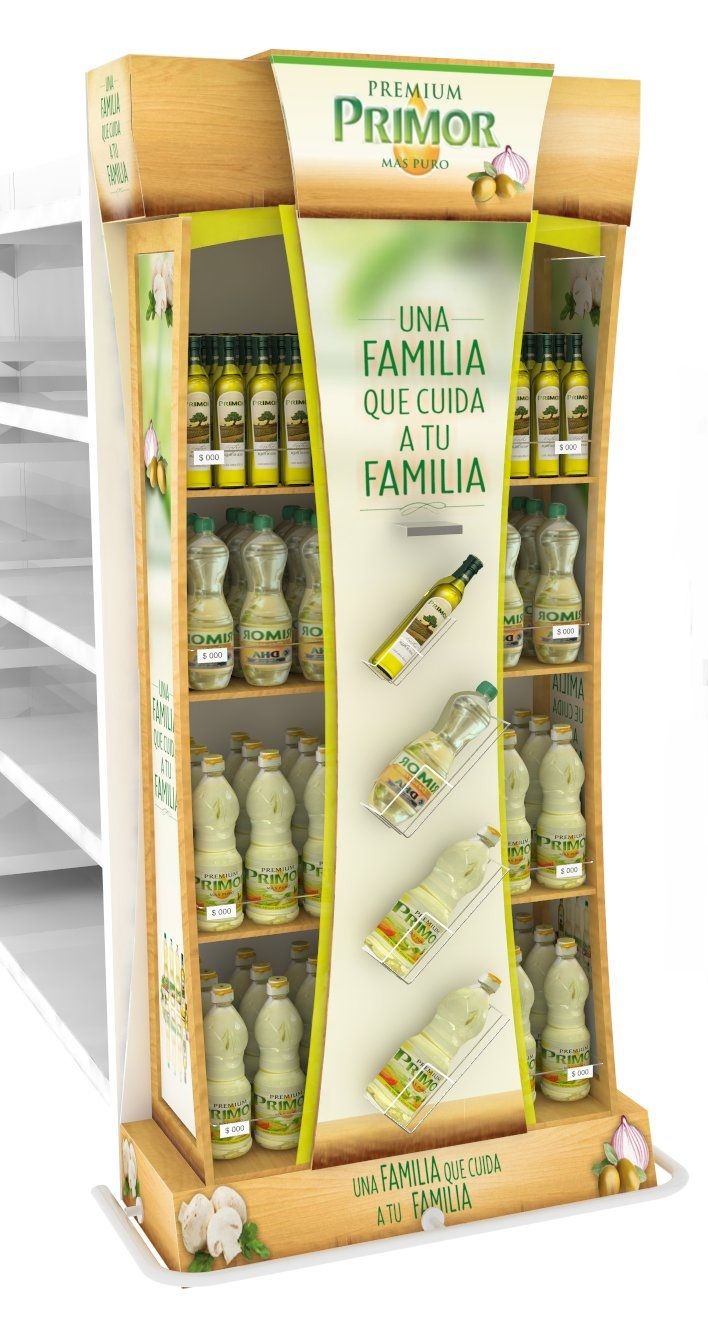SUSTAINABILITY COMES TO THE FORE IN RETAIL – CLIENTS DEAL WITH MATERIALS AND POS DESIGN
Sustainability has been a key issue in recent months. Most Dago clients deal with materials, type of printing, and overall design. They want to know the certificates and present sustainability, for example for chains, as a great benefit for the actual placement of displays or individual exhibitions.
3 ROLES OF PERMANENT STORES AFTER COVID
The ability to look authentic is a unique feature of permanent stores. This mechanism allows the brand to strengthen its credibility, to convince of the quality of its values it presents.
A HIGH-QUALITY DISPLAY CAN CHANGE ATTITUDES
The in-store Red Bull campaign by Dago brought the viral video mission to the shopping cart and increased sales by 20 percent.
Sustainability comes to fore in retail – clients deak with materials and POS design
Sustainability has been a key issue in recent months. Most Dago clients deal with materials, type of printing, and overall design. They want to know the certificates and present sustainability, for example for chains, as a great benefit for the actual placement of displays or individual exhibitions.
THE MARKET UNDER PRESSURE FROM LACK OF RAW MATERIALS AND RISING PRICES
The fight between materials for the creation of in-store communication has hardened considerably this year.
HOW TO EXCEL? BY COMBINING MATERIALS AND TECHNOLOGIES
Production companies are constantly coming up with technological innovations and want to shine with unique outputs. Of course, clients rightly expect that their POS will be innovative, visually different, and will excel in stores. They are willing to pay extra if the...
EVALUATION OF PHARMACIES FOR MARKETING & MEDIA
Preserve and respect tradition and color, or embark on bolder combinations with the risk of confusing the customer?
The year 2021 will be completely different for POS
Compared to the past, submitters will be paralyzed and will not invest as much This year, submitters will turn every penny twice and will want to make the most of the activities. HoReCa is closed, in some companies, investments in this segment are zero. Many of them...
We are devoted to one coffee. Until we are tempted to taste another one.
Amazing taste and smell, relaxation, “energization”, a moment of rest, or just a subconscious routine. Each of us who drink coffee and who buy it sees a different “companion” in it. Those days when people only chose between coffee beans and instant coffee are gone forever.
Shelves as the most effective POP medium and a category management tool
We all know shelving systems. We can see them in every retail store for many years. It serves mainly as a carrier of products. The more shelves, the better. Each one has a different color, size, and overall dimensions. Some were purchased directly by the retailer and some were supplied free of charge by the supplier of the goods. During the business history of each store, a mixture of shelving systems has emerged, among which there is a slight mess.
Sell olive oils by means of ecology and nature

“A diet based on a large amount of olive oil is beneficial to the human body.” It has been several years since this sentence spread throughout the world and olive oil experienced its boom. In stores, there was only one problem to solve – whether the oil is virgin, cold-pressed, or 100% natural.
However, this is not surprising, because there have been published several studies focusing on fats in food. The studies compared Mediterranean countries with other European countries and concluded that cardiovascular mortality is significantly lower in the Mediterranean – just because the typical diet in the Mediterranean consists mainly of fresh vegetables and fruits, legumes, fish, and olive oil.
During the coronavirus pandemic, the emphasis is again on a healthy lifestyle, and people are once again interested slightly more in their eating habits. Olive oil is regaining popularity. We have an inexhaustible amount of such goods available on the market, within which, I dare guess, no one can completely orientate themselves, so manufacturers need to highlight their products, promote them as much as possible, and thus make the choice easier for the end customer.
However, not only manufacturers should follow this. I would recommend this procedure to stores that can rebrand the entire category of olive oils and thus specialize the point-of-sale and facilitate orientation among products.
 In terms of material, natural materials, such as wood or recyclable cardboard, are predestined for the category. A healthy lifestyle goes hand in hand with environmental responsibility, and thanks to the promotion of recyclability and sustainability, products on the market gain plus points from potential customers.
In terms of material, natural materials, such as wood or recyclable cardboard, are predestined for the category. A healthy lifestyle goes hand in hand with environmental responsibility, and thanks to the promotion of recyclability and sustainability, products on the market gain plus points from potential customers.
It will pay off to invest in POP materials promoting food, as food has always been priority number one for humans – and therefore for customers. And specifically, olive oils have a lot to offer to increase the likelihood that they will end up in shopping carts.
Example of a store:
A beautiful example of shelf branding for olive oil is this one in Carrefour, Dubai. Well-chosen earthy colors and a topper suspended from the ceiling strongly attracts attention. It is complemented by artificial greenery, which will support the customer’s impression of the offer of a natural and quality product. The educational nature of the display, which is included in the notes next to the individual oils and speaks of the type of production, cannot be overlooked. Dubai itself is a city of spectacular gestures and is full of pomp. And that’s exactly what shelf branding is.
Annette Schulze, Dago s.ro.
Source: Marketing&Media

 SK
SK


